Ya’ax in the yucatecan landscape
The writers tell us about the Ya’ax (green Maya) in the yucatecan landscape: perception and toponymy.
Culture is a powerful entity that is transmitted through people and their practices. However, there is something that is only perceptible in the landscapes and that creeps into our senses: we see it on the roads, on the trails, or even where they fade into the horizon. In the Mayan region, as in other agricultural cultures, the smell of wet earth almost always carries a good omen. During the rainy season, which runs from the second half of May to November, we can feel the intense green through the aroma of humidity and wood, along with the sensation of rain and heat that permeates the skin.
The Mayan culture has coexisted with its environment for thousands of years, creating symbolic figures in its language, not only to give names to this and other phenomena, but also to account for the powerful link between nature and its imagination and social structures. According to Mercedes de la Garza and Élodie Dupey García, in the cosmogony of the pre-Hispanic Mayans, the terrestrial plane was divided into four directions, each one linked to a color, to the signs of the ritual calendar and to the bacab’oob (pillars of the world). In the center, acting as the axis, was the “mother ceiba”, green in color (ya’ax)¹
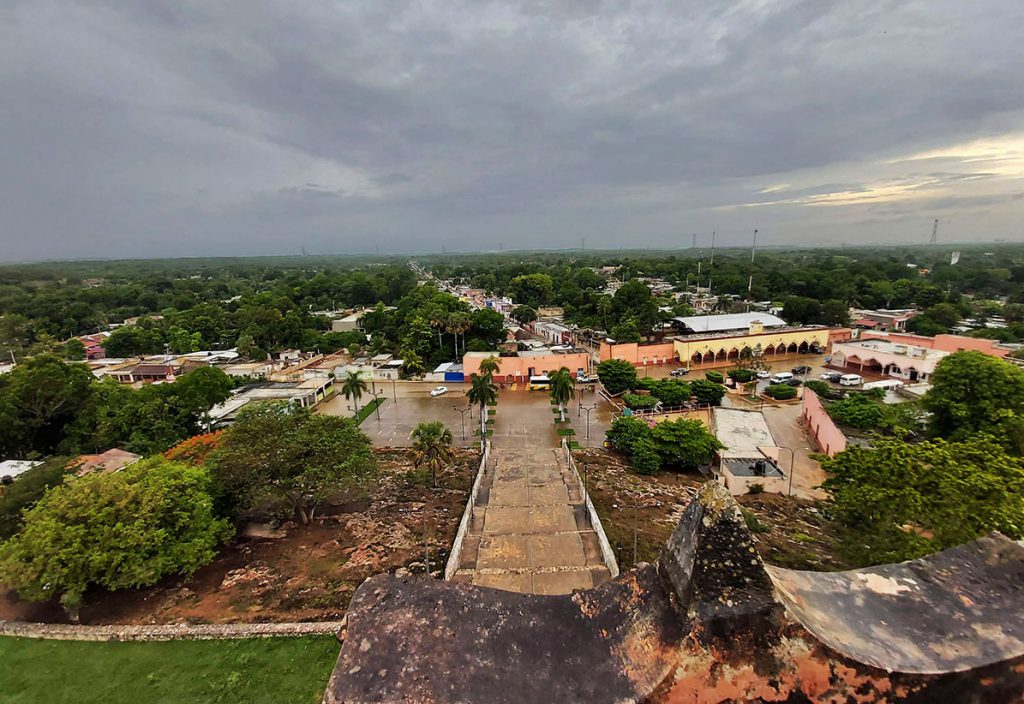
The surroundings of the town of Santa Elena, Yucatán
Photography: Héctor S. Duran Castillo
This way of conceiving the space and the chromatic associations are still an important part of the ritual traditions of the Mayan² peoples. Ya’ax³ or yax, in Yucatec Maya, is a complex and polysemic word that we can find defined in dictionaries as “green”⁴, but which can also mean an intense blue⁵ color, related to water. To understand the importance of this word, it must be taken into account that, in the Mayan cosmogony, the great sacred ceiba tree connected heaven, earth and the underworld.⁶ This is how the word ya’ax refers to water as a source of life, as well as to a metaphysical connection between the earthly and the divine. It is worth mentioning that the sacred ceiba tree still bears the name Ya’axché⁷ or Yaxché. Likewise, it is not a coincidence that several towns or places in the state have such a term somewhere in their name, such as: Yaxcopoil (“Place of green poplars”), Yaxché de Peón (“ceiba de Peón”) , Yaxcabá (“place of green land”), among many others. This extensive toponymy intertwines the greenblue color with conceptual and geographical terms, which makes us understand how thanks to the richness of language we can approach the relationship of the human with the environment and with the spiritual plane.
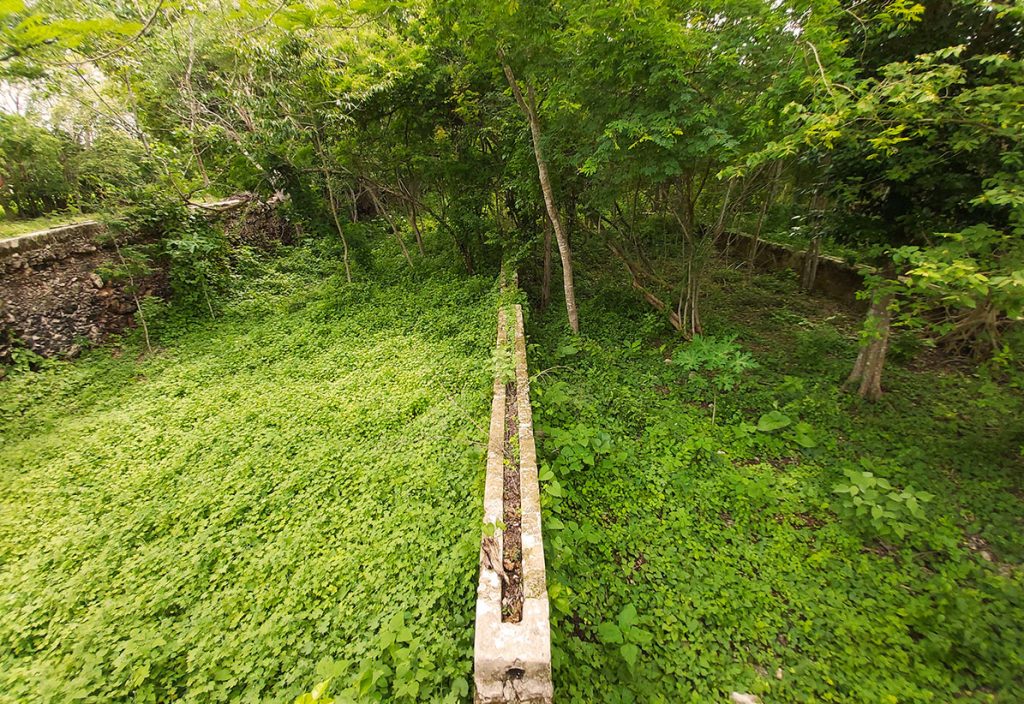
Irrigation system and paths covered with vegetation
Photography: Héctor S. Duran Castillo
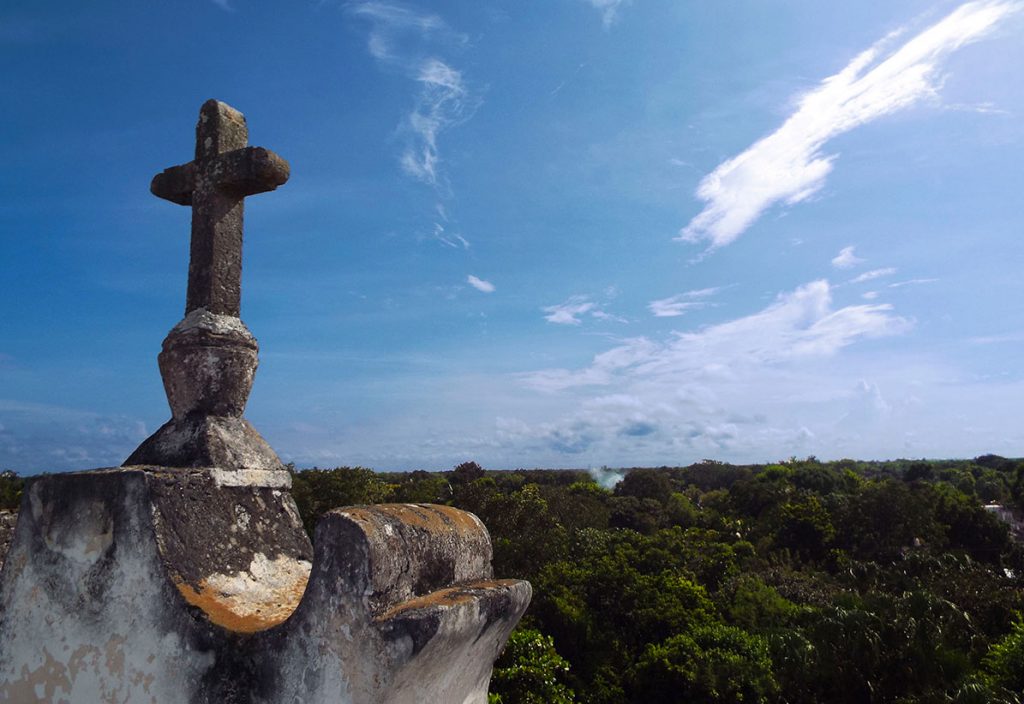
View of the surroundings of the town of Ixil
Photography: Héctor S. Duran Castillo
The ya’ax is found in the imposing jungle of the lowlands, where even the sun sees its entrance difficult, which we perceive from above as an intense “sea” of fronds. We see it in caverns and cenotes, where the light reveals the transparency and the intense blue color of its waters. We can also observe this color in architecture, where the moss blends with the stone, wood or earth that is used to build buildings. It gives us the impression that the buildings rise like logs, where the green is the fertile land. Its walls receive the implacable embrace of the passage of time and vegetation. In the archaeological and vernacular Mayan landscape the ya’ax coexists and involves a large number of natural and built elements. It is part of a way of life, of a sensitivity, of a rich cultural and natural heritage, which we should understand, value and respect.
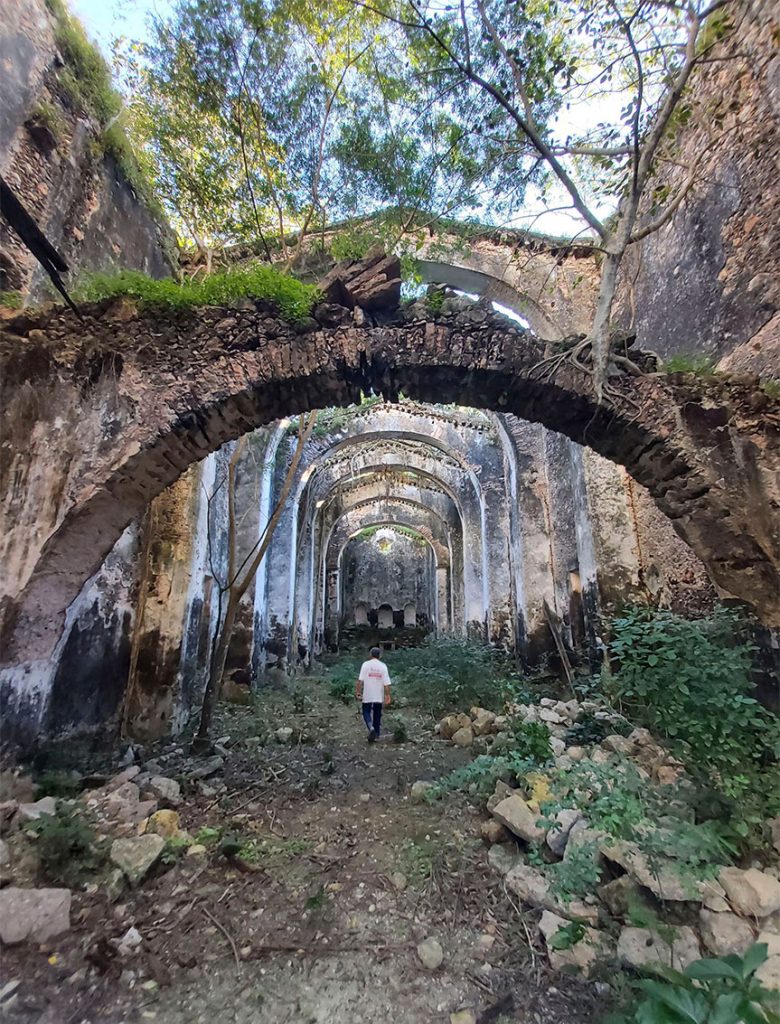
Interior of the central nave of the chapel of the Hacienda de Tabi, Yucatán
Photography: Héctor S. Duran Castillo
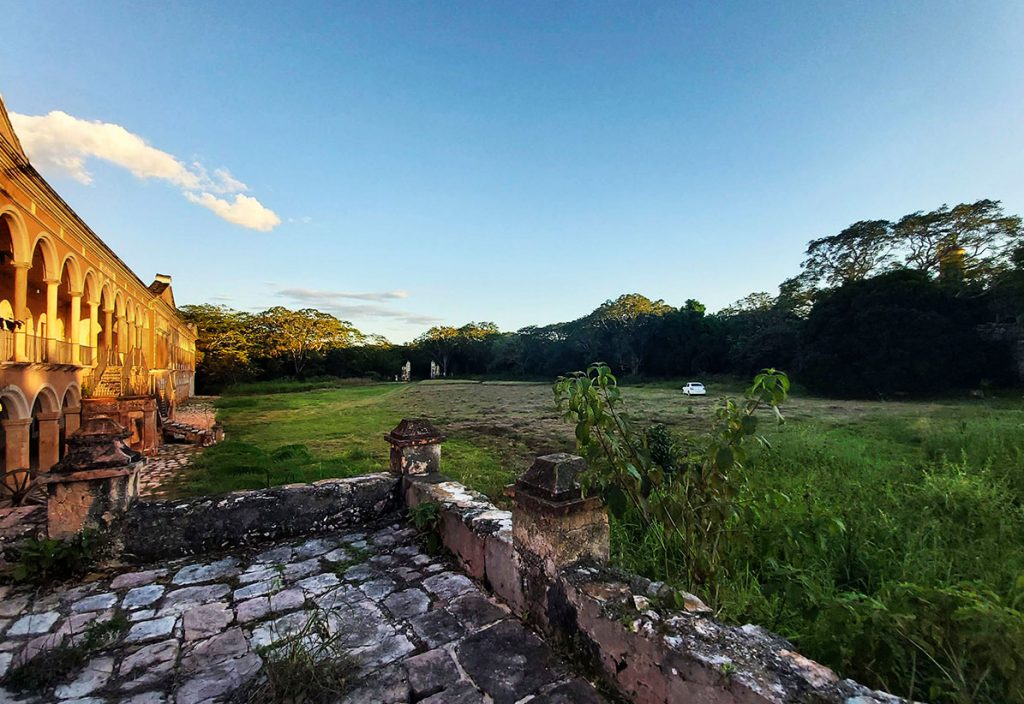
The main house of Hacienda Tabi, Yucatan, surrounded by vegetation
Photography: Héctor S. Duran Castillo
¹ De la Garza, Mercedes, “Cosmovisión de los mayas antiguos”, Ciencias, numero 18, 1990, https://www.revistacienciasunam.com/es/166-revistas/revista-ciencias-18/1490- cosmovisi%C3%B3n-de-los-mayas-antiguos.html
² Como, por ejemplo, en las creencias de los mayas kaqchikel. Ver: Urdapilleta Carrasco, Jorge, et Kajkan Felipe Mejía Sepet. “El bastón rojo se sostiene: conocimiento cultural del pueblo kaqchikel”. Revista Pueblos y fronteras digital 10, no19 (1 juin 2015): 109. https://doi.org/10.22201/cimsur. 18704115 e.2015.19.47.
³ En algunos nombres de lugares y de cosas, podemos encontrar palabras con la ortografía yax.
⁴ Juan R. Bastarrachea, Ermilo Yah Pech, Fidencio Briceño Chel, Diccionario Básico Español-Maya-Español, consultado en línea el 15 de agosto de 2021. https://www.mayas.uady.mx/ diccionario/y_maya.html
⁵ Sanja Savkic, “El léxico cromático y la ideología maya”, Estudios de cultura maya, 37, p. 99-119, 2011, recuperado en 17 de agosto de 2021, de http://www.scielo.org.mx/scielo. php?script=sci_arttext&pid=S0185-25742011000100004&lng=es&tlng=es.
⁶ De la Garza, Mercedes, “Cosmovisión de los mayas antiguos”,…op. cit.
⁷ Juan R. Bastarrachea et al., Diccionario Básico Español-Maya-Español, op. cit.








